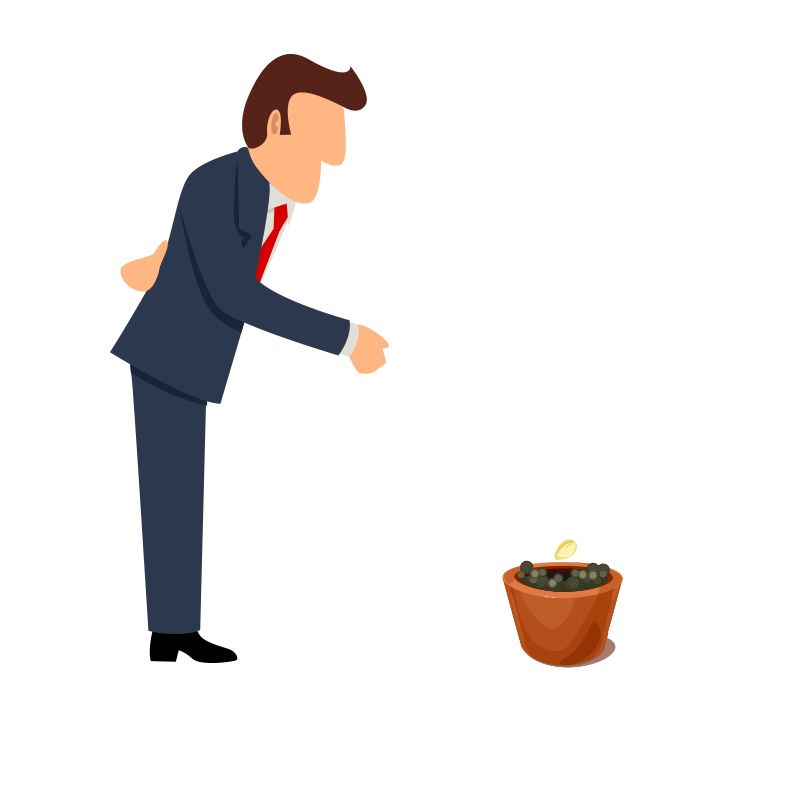This one thing alone can make you Wealthy!
- Harsh Sahijani
- Jun 25, 2020
- 3 min read
Do you remember that our school professors used to say that an early bird catches the worm.?
It means that the person who takes the earliest opportunity to do something will gain an advantage over others.
Well, it is very well true in the world of investments too.
We all think that the person who will invest more will accumulate more wealth. The way to become rich is to earn as much as possible. But it's a half-truth. Most of the time the person who has a high income also has high expenses.
In this article we will see that it's not like this at all, it doesn't matter how much you invest but the only thing matters is how long you stay invested, how much you save out of your earnings, and how smartly you use your money.
Meet Gita & Vikram
Let me make you understand the whole scenario with the story of two friends namely Gita and Vikram, both are working in the same company in the same position. They both are 25 years old and they both came to know about the 'SIP - Systematic Investment Plan' which says you invest some portion of your income at regular intervals for a certain period.
Let's assume here that they both will get an equal rate of return on their investments, 15%. And currently, both are earning equally.
Now let's look at their life stages at various age.
25 years old
Gita starts investing a portion of her income, ₹10,000 every month while keeping her other expenses moderate.
Vikram on the other hand chose not to invest now as he thinks that it's too early for him & he must live life to the fullest and have fun while he's young.

35 years old
Gita accumulates ₹26,30,182 by investing ₹10,000 every month for 10 years @15% annually (calculations are done on SIP calculator)
Vikram has nothing right now but realizes that he must start investing from now on. He decides to invest ₹20,000 a month, twice the amount invested by Gita.
On the other side, Gita stops investing every month & now she just holds her investment. She now decides to live her life to the fullest as she thinks that she had enough money now.

45 years old
Gita's investment grows for 10 years with the same rate of 15% per annum & now she has accumulated ₹1,06,40,552 (compounding every year for 10 years).
Vikram on the other hand accumulates only ₹52,60,364 even after investing double the amount than Gita.
Vikram decides to keep investing ₹20,000 every month for another 10 years while Gita doesn't feel the need to invest more.
55 years old
Now after 30 years down the line,
Gita has got a massive amount of ₹4,30,46,970 at the end of 30 years (compounding every year for another 10 years).
While Vikram only managed to accumulate the total amount of ₹2,65,41,469.

So what happened exactly?
Gita invested ₹10,000 per month for 10 years. Which sums up to ₹12,00,000
Vikram invested ₹20,000 per month for 20 years. Total adds to ₹48,00,000
Four times the amount invested by Gita.
Gita accumulates ₹4,30,46,970
Vikram accumulates ₹2,65,41,469
Even after investing twice the amount invested by Gita & twice the period of investing Vikram accumulates only 60% of the amount of which Gita does.
But why is it so?
It happened because of COMPOUNDING EFFECT. It's nothing but a pure wonder of mathematics. There are 7 wonders in this world and the 8th wonder is COMPOUNDING.
Here time plays in your favour, Time does have value certainly.
Once a legend said that always invest for a long term, that legend is nobody but Warren Buffett. So it's pretty much clear that starting early gives you a sharper edge of time!
Here are your takeaways from this story.

Liked what you read?
Share this blog on Whatsapp.
Subscribe to our Weekly Newsletter - FinMail
FinMail simplifies Financial Stories and topics for you. It is your perfect brew for your brain.
















Comments